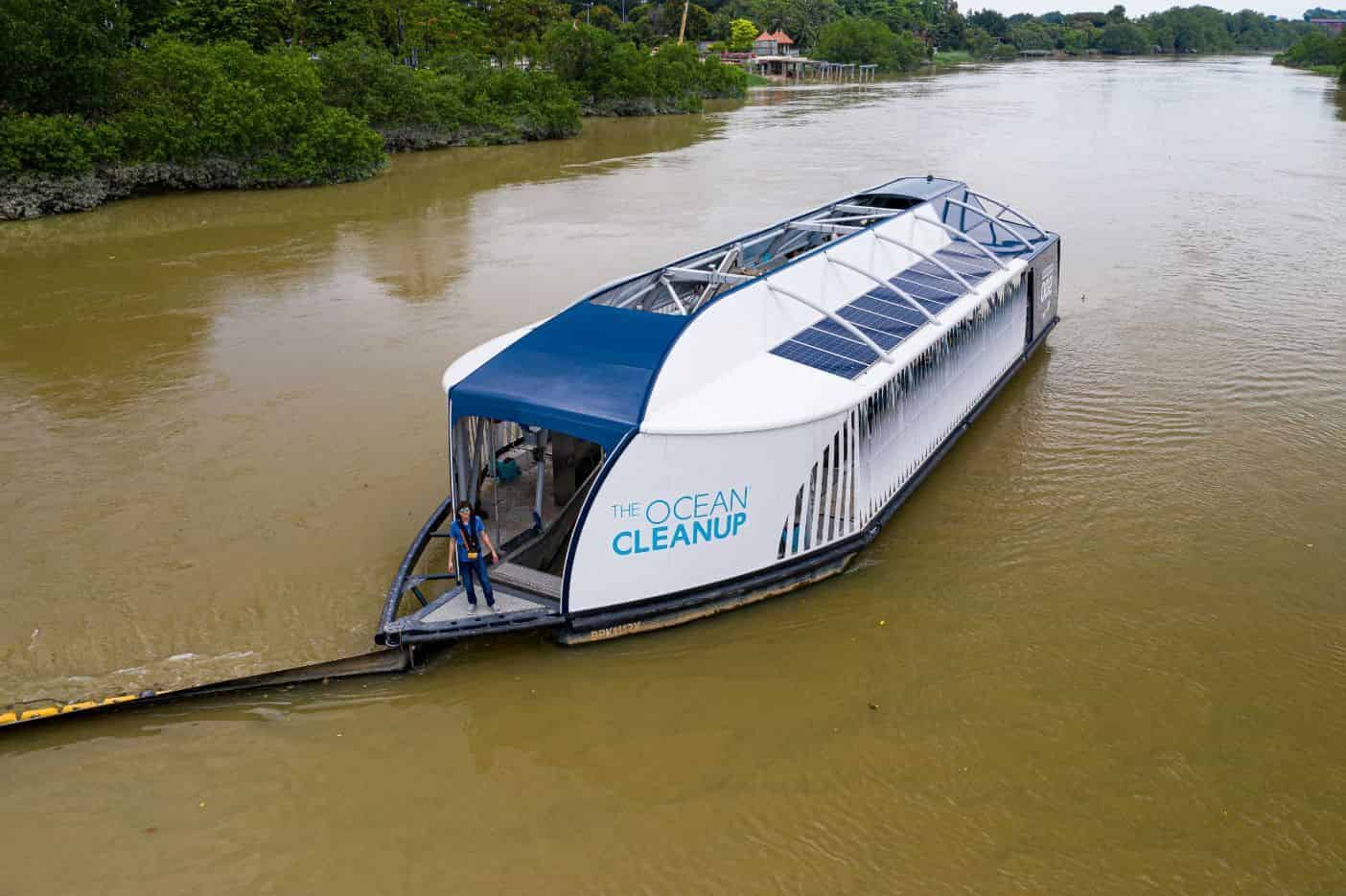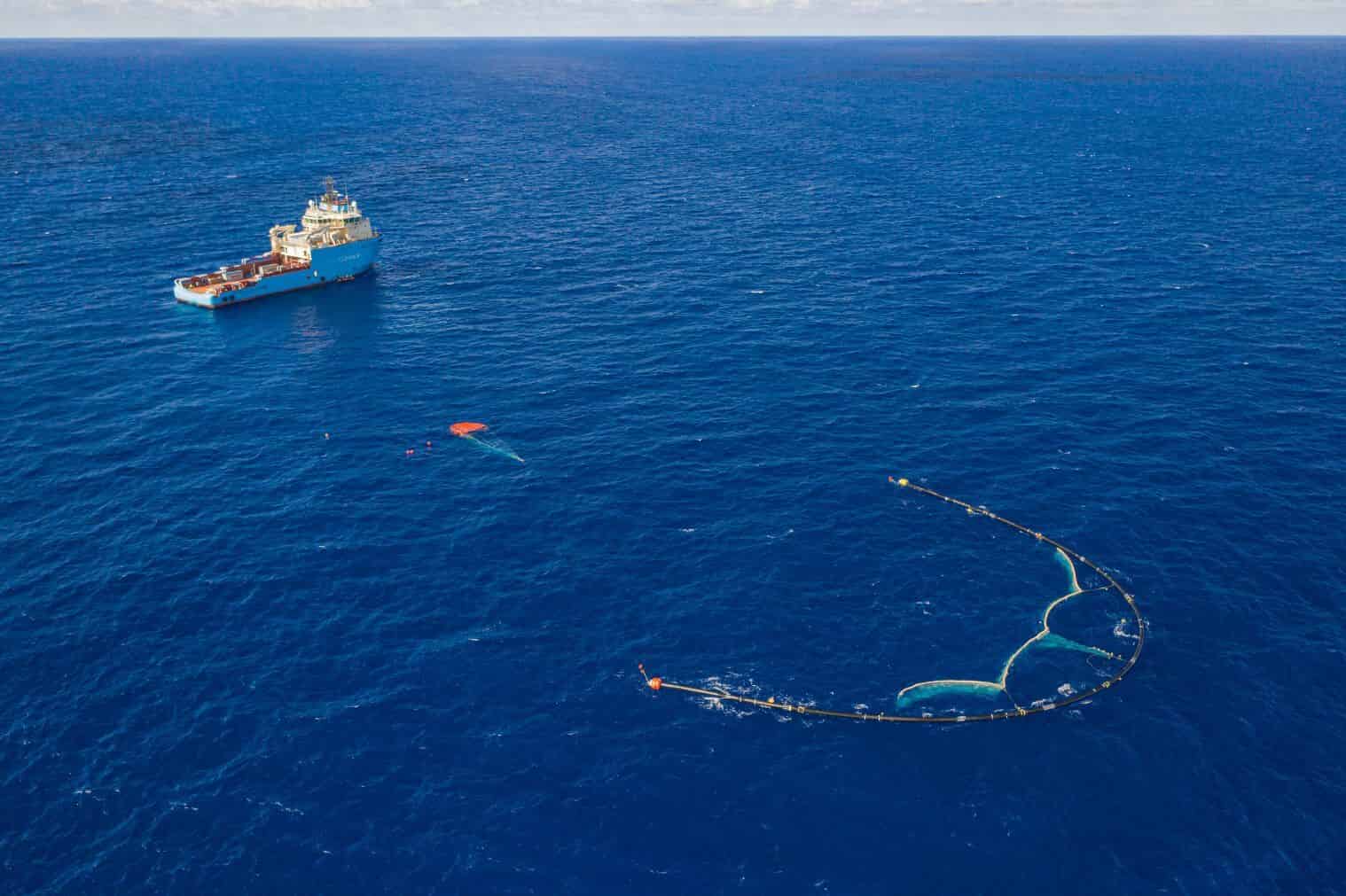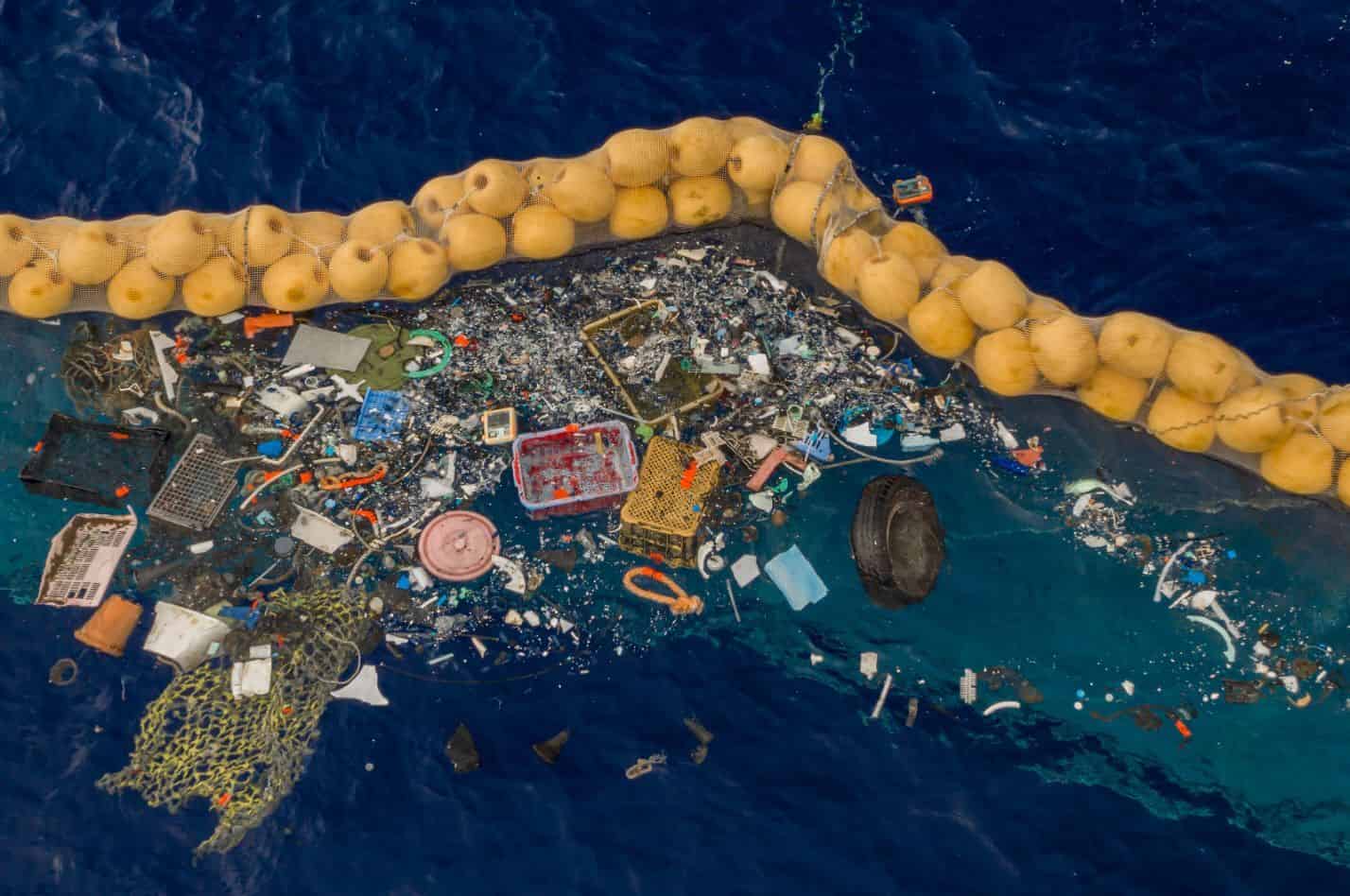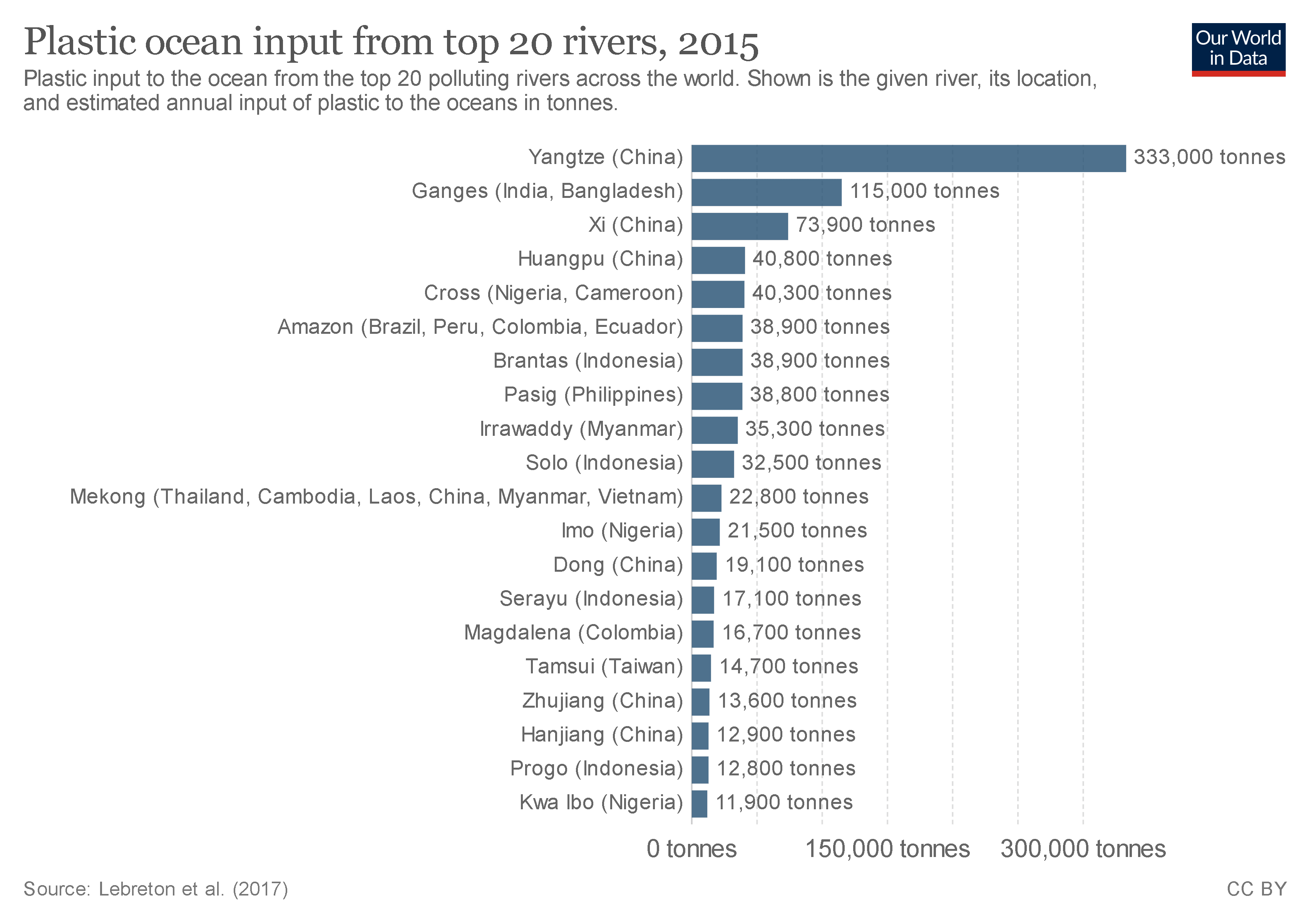There's a lot of publicity for new solutions to clean plastic pollution from the oceans. The question is: can this be done scalably and is it an effective long term solution?
This is one of the case studies we're creating on different companies that are working in the plastic pollution space. We're hoping to highlight the good and bad examples of what kind of work is effective in solving this massive problem, keeping in mind that there are a lot of subcategories in this issue!
This case study focuses on companies working on cleaning plastic waste from the ocean. The most well-known company here is The Ocean Cleanup, but other companies like it include Plastic Oceans Canada and Ocean Conservancy. A general way to describe their work would be to extract the waste that's already wound up in the ocean, but the specifics are a lot more interesting!
How it Works
To dive into the interesting details, some images of The Ocean Cleanup's work can quickly get to the point:



So what are all these futuristic machines for? To start off, the Ocean Cleanup's goal is simple - they want to clean plastic waste that isn't properly disposed of (often in developing countries) and ends up in oceans. Every year, about 8M tonnes of plastic waste (2.9% of total plastic waste made per year) ends up in the ocean, although well under a million tonnes is actually present in surface waters (Source).
To do this, they have a few fancy tools. The first system they created is basically a floating net, but more ingenious. These nets (like System 001/B above) are deployed in the surface waters of the ocean near areas of high plastic waste concentration (like the Great Pacific Garbage Patch). They move around based on ocean currents, building up drifting plastic.
The ingenious part of these nets is that they're autonomous. You deploy them in these garbage patches and leave them there, letting ocean currents do the work of getting the plastic waste and the nets in the right places. Eventually, you can go to these nets and collect the plastic waste they've picked up.
Then, comes their other major technology, called an 'Interceptor.' These Interceptors are deployed at the mouths of major rivers that feed plastic waste into the ocean, where they gradually collect this waste and autonomously sort it into different bins by plastic type. Once the bins are full, the sorted waste can be collected and sold to be recycled.
What are the Benefits?
The Ocean Cleanup's work is very different from other organisations that work on cleanup activities, which often involve manual cleanup of beaches or shallow waters. The autonomous approach at The Ocean Cleanup is comparatively more scalable in cleaning plastic waste, because it doesn't rely on volunteers and doesn't involve costs in hiring many staff.
When it comes to the Interceptor specifically, their idea of collecting waste at rivers instead of at the garbage patches in the oceans makes a lot of sense since 20 rivers worldwide account for 67% of all the plastic that enters the ocean (Source).

So collecting plastic waste at the river source - before it ends up in the oceans - is closer to addressing the root cause of the issue of marine plastic pollution. With the Interceptors, the Plastic Cleanup aims to stop 80% of plastic waste from entering the ocean within the next 5 years and with its floating nets being deployed in the Great Pacific Garbage Patch, it aims to reduce the quantity of plastic in the patch by 50% every 5 years.
What are the Limitations?
Now, this sounds great when it comes to cleaning the plastic waste in the oceans. But as I mentioned before, only about 2.9% of all plastic waste generated per year ends up in the ocean (Source). The overall plastic waste issue is a lot bigger than just ocean plastic waste.
About two times as much mismanaged plastic waste in coastal areas stays on land as the amount of plastic waste that enters the ocean per year. This waste still has many other issues (especially when stored informally in open dumps in developing countries) when it comes to chemical leakage and biohazards.
Then, the other major issue is that cleaning existing plastic pollution (whether it be in rivers or in the oceans) doesn't stop new plastic pollution from ending up there. The root causes of the plastic pollution issue have to do with how we produce, use, and dispose of products - these problems won't simply be solved by cleaning up products that end up as waste, but from preventing them from ending up as waste in the first place.
To their credit, it does seem like The Ocean Cleanup is aware that they're only temporarily alleviating this problem instead of addressing it in the long term. It might be said that they're buying more time while other companies work on more long term solutions.
But some other companies that are also based on cleaning plastics are not very scalable and might actually be detracting from resources being prioritised for organisations that ARE actually working on solutions that lie closer to the root cause of the issue (Source)
Does this Area need More Attention?
It seems like The Ocean Cleanup is already leading new and innovative solutions that can scalably address ocean plastic pollution. And other organisations working on this cause via manual cleanups with volunteers and staff are even less effective at scalably solving this (short term) issue.
While there is always another approach that might also be effective at solving this problem (and it's a pretty cool problem to be working, on all things considered), having more hands (however efficient) working to clean the ocean won't impact this issue in the longterm.
Comparatively speaking, it would make more sense to address issues that are closer to making the products we use to be produced, used, and disposed of in a more sustainable manner. In our opinion, some ways to do that include:
- Helping create more environmentally friendly standards for informal waste management (Source)
- Speeding up the cost-effective development of alternative plastics (Source)
- Creating policies to make producers responsible for the waste generated from their products (Source)
We hope to inspire more research and action on areas such as these, as well as inspiring charities currently focusing on activities to clean ocean plastics to reconsider how they might best make a dent in this issue!
Further Reading:
